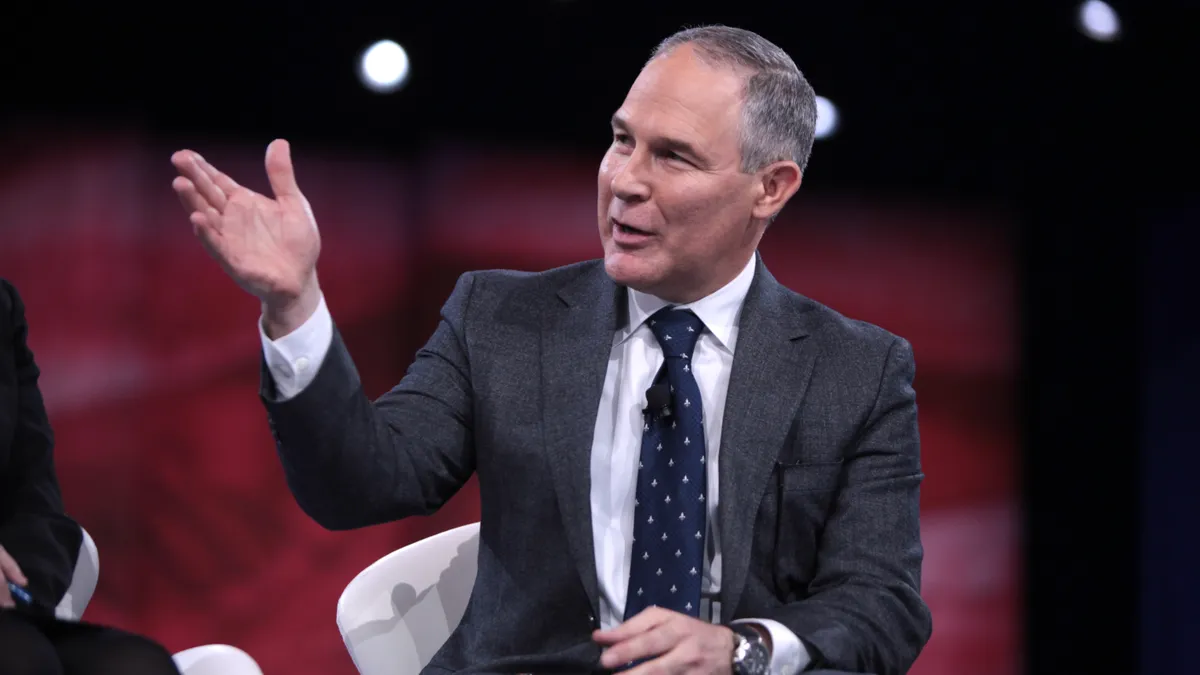Dive Brief:
- E&E News reports on some details which have emerged on how the White House intends to approach its rollback of the Clean Power Plan, with plans to argue the U.S. Environmental Protection Agency overstepped its authority in regulating the entire power sector under the Obama administration.
- The strategy, which is largely the same used by opponents of the rule in court, will not attack the underlying science or seek to undo the 2009 endangerment finding that the pollutant threatens public health.
- Details have slowly been taking shape as to what form a replacement for the Clean Power Plan will take. The Trump proposal is now under review by the Office of Management and Budget.
Dive Insight:
For the most part, the Trump administration's approach to undoing Obama-era environmental rules has been kept under wraps. The major question has been how or whether the EPA would propose a replacement or seek to simply eliminate the rule—and thereby opening up a fight over the underlying science and the agency's mandate to regulate carbon emissions.
E&E News reports the White House plans to argue that the Clean Power Plan overstepped by extending beyond the fenceline of power plants. That could indicate the agency plans to release a scaled-back rule opposed to undoing it entirely.
While a court battle is certain to follow, despite whatever form the review takes, environmental advocates told E&E it was too soon to comment on the fight ahead. OMB typically takes about two months to review a rule, but can take additional time.
There are a variety of ways Pruitt's EPA can replace the CPP. If the administration chooses to replace the climate policy with a less stringent rule, it could result in a narrower regulatory package that would require only small efficiency improvements to existing coal plants. EPA Administrator Scott Pruitt wrote such an alternative plan in 2014.
If the EPA fails to offer a plan to replace the CPP, the agency could be at risk for lawsuits claiming that it is not fulfilling its obligation to regulate greenhouse gases, which it determined was a public health threat in a 2009 endangerment finding.
Challenging the endangerment finding would be an uphill battle, energy lawyers told Utility Dive, because the EPA would have to prove in court that GHGs are not a public health threat. Even so, Pruitt has shown appetite for the fight before, signing onto a legal challenge to the finding in 2012.The CPP seeks to reduce emissions from existing power plants 32% by 2030, and would have been the engine behind the United States' commitment to the Paris climate agreement. Trump, however, announced last week that the country will abandon the multinational accord.
The Clean Power Plan is essentially dead as written since it has been tied up in court at the beginning of 2016. In April, the U.S. Court of Appeals for the District of Columbia Circuit granted a White House request to pause ongoing litigation surrounding the rule as the Trump administration determined how it would move forward.
Regardless of how the administration plans to move forward with the rule, utilities will continue investing in renewable energy and natural gas at the expense of coal plants over the next decade. But a repeal will come with a hefty pricetag, according to clean energy think tank Energy Innovation. Eliminating the CPP could result in $100 billion in extra costs by 2030, and an additional $600 million by 2050.















